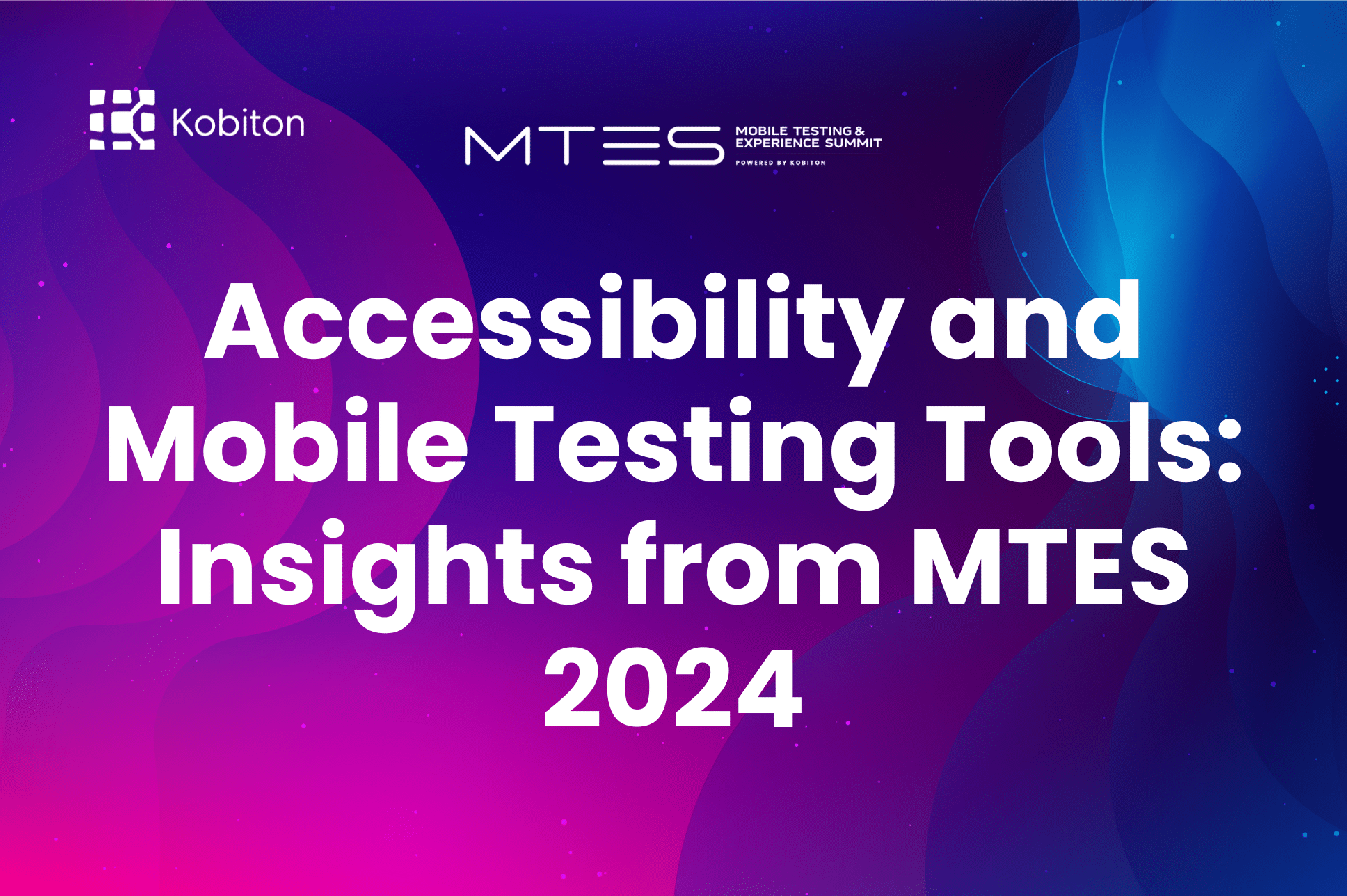
Accessibility and Mobile Testing Tools: Insights from MTES 2024

Cara Suarez
Would you be surprised to learn that even established industry leaders need to value continuous learning?
At Kobiton’s Mobile Testing & Experience Summit, I was able to catch up with Ringo Perez. As a 20-year AT&T veteran, Perez is widely regarded as an industry authority in mobile device automation testing. In his work serving as a scrum master, Perez supports multiple scrum teams in mobile device automation and testing for Emerging Device Systems (EDS) projects. Additionally, he crafts automation strategies for critical applications destined for pre-launched mobile devices.
He is a driving force contributing to AT&T’s Mobile Center of Excellence (MCOE); striving to disseminate mobile automation knowledge. As mobile becomes the go-to channel for enterprise organizations to reach their audience, it’s more important than ever to ensure your mobile apps are being released faster while improving quality and engagement. An efficient CoE isn’t just a “nice to have.” Today, it’s a necessity.
Perez not only shared insight into why his team needed a successful CoE over a decade ago, but he also took time to explain measures that gauge its success, and how it considers funding these important hubs.
Below are some of the highlights, and key takeaways from our enlightening conversation. To enjoy the full program, watch MTES on-demand. I hope you’ll enjoy it as much as I did!

“I’ve been working with AT&T since 1996, and started to be involved with its CoE around 2012, when we worked to solve the problem of how we can test mobile applications that we were developing,” Perez explained.
A CoE consolidates an organization’s mobile testing practices and operates as a collective hub for expertise, best practices, and standardized processes. A CoE enables teams to drive the quality of mobile app testing and development.
Back then, Perez told me, his team was asked not just how to develop and test on real devices — but how that process could be accessed remotely, around the world.
AT&T addressed the issue by using both Katalon and Kobiton, together
“There were a lot of integrations at that time between the two, that’s why we selected them,” Perez says. “Katalon was able to provide us with the testing automation framework, because Kobiton was just providing on the mobile landscape. They have some scripting automation capability as well, but that whole framework can be done on the Katalon side. Which also provides the capability to automate your web, API, and then mobile at the same time. We know we’re not dealing with just mobile right now. We’re also dealing with all those different ways of automation,” he adds.
“A lot of the issues that we encountered, it’s not because the tool can’t do the job. It’s how we configure, how different networks are communicating.”
“We just started setting up our own lab,” Perez said. “As we planned to connect resources from around the world … we looked at several vendors at the time who could help us.”
That was 12 years ago, and a lot has changed since then.
“It was an amazing capability at that time,” Perez pointed out. “Not even thinking about automation – just for us to be able to get ahold of devices, from my desktop.”
Which is a great point. Think for a moment about how different our attitudes are about mobile – even tech in general – compared to a decade ago.
It goes without saying that AT&T does a lot of business. Perez told me that, within the AT&T enterprise, they’re now supporting 125 business units.
Wow!
Key, he said, is being able to evaluate where resources are best used.
“We were able to scale down as we understand what we really need,” Perez said. Which makes sense; we all learn how to work better and smarter every day, right? AT&T is no different.
At Kobiton, sometimes organizations will come to us with priorities that might be out of the ordinary. Regardless, we’re able to swiftly determine steps to assist each and every company we work with. That’s because we understand how one size generally doesn’t fit all in scaling an organization’s CoE; there can be a diverse set of needs across apps.
Thankfully, Perez and I were able to discuss how his own team decided to gauge the success of their CoE. He explained that, at first, his team only considered the growth of user adoption. Then, his team projected – on a year-by-year basis – how many business units were coming in.
“We started checking the users’ usage,” he told me, and “then were able to check in on how they were utilizing the platform.”
Okay, so another related topic is how to cover the cost of setting up and maintaining a state-of-the-art CoE.
Perez told me that it’s primarily a question of what type of company they’re working with.
“We function as a service within the company,” he said. Sometimes, AT&T responds to that question with, “Let’s handle all of that.” But, he added, it also depends on the company itself.
I asked Perez how organizations are able to grow with concepts like a CoE — if they don’t have enough funding?
“We survey users to ask, ‘What does this look like to you?,’” Perez explains. “How much is the company saving by utilizing this platform?” One example he shares is a potential to avoid production issues.
As with a number of other factors on the tech landscape, opportunities and resolutions abound.
“We’re still discovering a lot of things,” Perez says.
Thankfully, our conversation is now able to help others discover, as well.
Ringo Perez pioneered the Mobile Device Testing Platform with Mobile Center of Excellence practitioners within AT&T.
To enjoy the full program, watch MTES on-demand